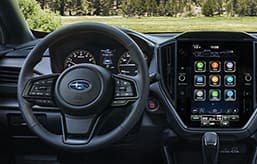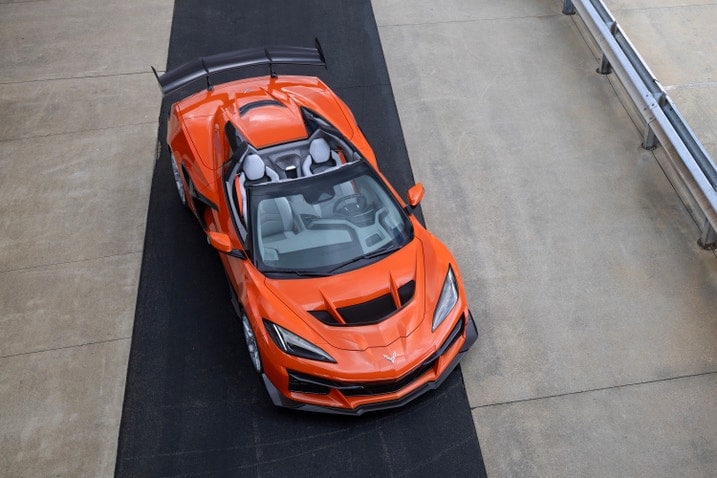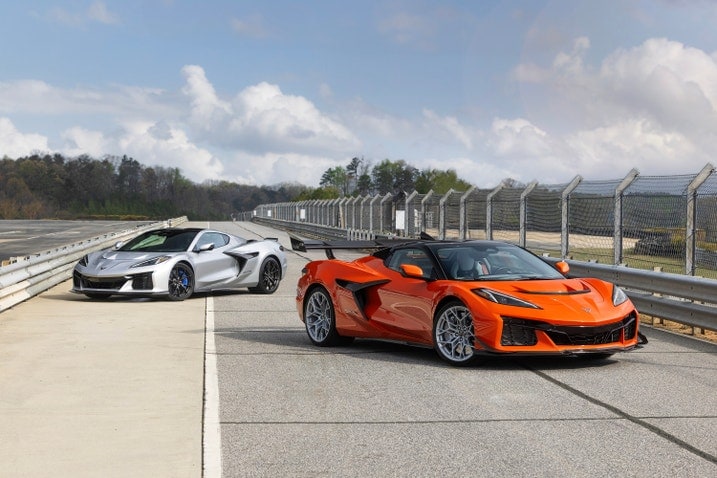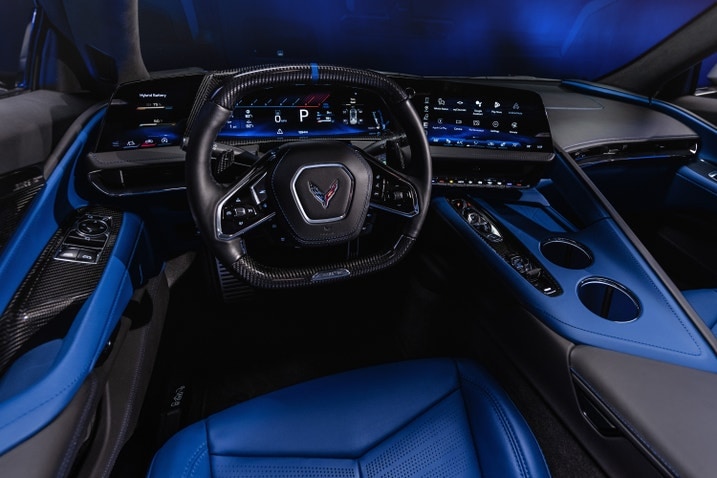- The Chevy Corvette ZR1X adds hybrid power and all-wheel drive to the ZR1.
- An electric motor powers the front wheels; a V8 powers the rears.
- The ZR1X produces a remarkable output of 1,250 horsepower.
- The ultimate Corvette goes on sale in early 2026 and we expect a starting price north of $200,000.
2026 Corvette ZR1X First Look: Chevy's 1,250-HP Monster Isn't Called Zora
The Corvette ZR1 adds hybrid power to create the ultimate Chevy supercar
Meet the 2026 Chevrolet Corvette ZR1X — emphasis on the X. Put simply, it's a hybrid version of the extraordinary Corvette ZR1, adding not just more power, but crucially, all-wheel drive. On sale next year for north of $200,000, the ZR1X will boast the not insignificant sum of 1,250 horsepower.
It's not called Zora
This car is not a well-kept secret — prototypes have been snapped running around for months — but it's great to see it finally confirmed. The only thing that is a surprise is the name. All the speculation pointed to it being called Zora in honor of legendary Corvette engineer Zora Arkus-Duntov. Chevy says it was never part of the plan, despite the Zora name being trademarked some years ago. It is officially the ZR1X, although it remains to be seen whether the Zora nickname sticks. For what it's worth, I think Zora is a much better name for something that is surely the ultimate version of the eighth-generation Corvette.
Unrivaled power and torque for the price
To say the X takes the hybrid system from the Corvette E-Ray and adds it to the ZR1 would be selling it short. The power and torque of the electric motor have both been increased, from 160 horsepower and 125 lb-ft to 186 hp and 145 lb-ft, respectively. This is significant because when combined with the 1,064-hp V8 from the ZR1, you get a magic number of 1,250 hp in a car that only weighs around 250 pounds more. The electric motor drives the front wheels, while the engine powers the rear.
The overall torque figure hasn't been confirmed yet, and you can't just add the numbers together as you can for horsepower. Having spoken to the ZR1X's engineers, I reckon 950-plus lb-ft would be a sensible guesstimate. These figures are for 93 octane gas, however, so Californians will have to cope with a little less oomph.
Winning performance claims
The performance goals are convention-defying: 1.3 g of peak acceleration in second gear and 0-60 mph in under 2 seconds. Chevy is also targeting over 1 g of lateral and longitudinal acceleration at the same time — that's cornering and accelerating simultaneously. That's a key benefit of the extra traction of all-wheel drive when compared with the "normal" rear-wheel-drive ZR1.
Chevy's development team reckons that despite the increase in thrust, the extra traction and stability of all-wheel drive will make the X's performance more accessible to a broader range of drivers. New tech is also being promised, including a qualifying mode that maximizes everything for the ultimate lap time and a push-to-pass system that activates the electric motor in case the 1,064-hp gas engine doesn't have enough grunt to get the job done.
As I learned when I drove it on a track, the ZR1 already stops remarkably well, but the carbon brakes have been uprated for the ZR1X. The X features massive 16.5-inch rotors front and rear with, for the first time on a General Motors product, 10-piston calipers at the front. In other words, it should stop as well as it goes. Chevy's test drivers say they recorded 1.9 g of deceleration at the Nürburgring in Germany, which should really test the neck muscles of track day fanatics.
You'll be hard-pressed to notice it
Anyone expecting the flagship Corvette to shout its preeminence will be disappointed. With the exception of the addition of an X to the badge and a subtle change to the cooling in the nose, there's almost nothing to differentiate the ZR1X from the standard ZR1.
The X will be offered either as a coupe (with a removable roof panel) or a convertible, and the same lineup of trims and packages will also be offered. The standard car without the ZTK track package and the carbon-fiber aero package has been internally christened the "executive express" and is surprisingly subtle. Only committed Corvette enthusiasts will identify this car as something different from a standard Stingray that costs a third as much. Add the huge rear wing and the ZR1X becomes much more extroverted, and this will surely be the option chosen by most customers.
The ZR1X will only be available with the new version of the Corvette interior, which debuts for the 2026 model year. It's an improvement on the original and now feels more befitting of a car of this price tag. The changes inside for the ZR1X amount to some extra on-screen graphics for the hybrid system and a couple of extra buttons.
A $250K bargain?
Everyone at Chevy is being tight-lipped about how much the ZR1X will cost. But if you consider that the E-Ray is roughly $40,000 more than the Stingray, it would be reasonable to assume a similar price difference between the ZR1 and ZR1X. It will be the first Corvette to start at or above $200,000, with a fully optioned car nudging up toward $300,000.
That's a staggering sum, of course, but Chevy is claiming the upcoming Ferrari F80 and McLaren W1 as rivals, both of which cost 10 or 20 times as much. The Ford Mustang GTD is also in development and lines up more closely on price, but its performance figures will be way down compared to the 'Vette.
The 2026 Chevy Corvette ZR1X will reach dealerships next year and we can't run the numbers both at our test track and on our Edmunds U-Drags course. Will it set new records? Probably.









 by
by  edited by
edited by